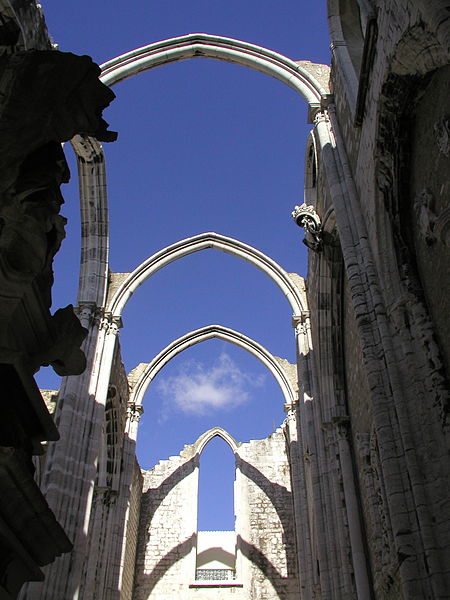 Continuing my theme of religion and the history of censorship, this blog deals specifically with the role of censorship in the Catholic Church and how it handles dissent in general - or did when it had the power before the forces of democracy got its autocratic abuses under control.
Continuing my theme of religion and the history of censorship, this blog deals specifically with the role of censorship in the Catholic Church and how it handles dissent in general - or did when it had the power before the forces of democracy got its autocratic abuses under control.One might expect that an intellectually honest belief, confident in its reasoning and certain of its factual basis, would welcome questioning and disagreement, knowing that it will either win any debate or will have the good grace and honesty to admit defeat and adjust it's thinking accordingly. This is of course anathema to the Catholic hierarchy which knows full well that the 'faith' has no such basis and so must be maintained by bullying and abusing its power to silence dissent and disagreement and prevent questioning at all costs.
The main method for handling dissent was of course to define anything not in full accord with Papal dogma as a heresy, and therefore Satanic, for which the only penalty was excommunication and death by burning. This was relatively simple when the only real way to promulgate ideas was by word of mouth, or by hand-written tracts which had to be laboriously copied to be reproduced, making it very difficult to disseminate new ideas and then only to an educated intelligentsia who could actually read. New ideas could be quickly nipped in the bud and the offending 'heretic' could be easily identified and 'cauterised'.
The invention of the moveable type printing press in Germany in the mid fifteenth century presented the Papacy with a more serious problem, demanding a different, more drastic approach however. For the first time, ideas could be put into print, even anonymously, and mass-produced for a wide readership. Even the Bible could, horror of horrors, be translated into the common tongue to be read by ordinary people!
To make matters worse, the nation states that the Vatican used to control were becoming more and more independent and, although they too took fright at the thought of all this information getting into the wrong hands and set up controls of the press, their interests did not always coincide with those of the Vatican and in some cases were even hostile to it.
After the dissolution of the Index, when some people thought the printing and distribution of the work was permitted, people were reminded again in L'Osservatore Romano (15 June 1966) that, as was published in the Acta Apostolicae Sedis (1966), the Index retains its moral force despite its dissolution. A decision against distributing and recommending a work, which has not been condemned lightly, may be reversed, but only after profound changes that neutralize the harm which such a publication could bring forth among the ordinary faithful.
This called for drastic action by a church not used to having its authority and especially its dogma questioned. The only solution was to ban and burn publications which didn't have the personal approval of the Pope and to frighten anyone who read them with the traditional threat of Hellfire. Not exactly the response of an Islamic cleric panic-stricken at the thought that someone might question the authenticity of the Qur'an or the authority of an Ayatollah, but not far removed from it.Cardinal Joseph Ratzinger, later Pope Benedict XVI, 31 January 1985, in a letter to Cardinal Giuseppe Siri.
To that end the Vatican drew up a list of banned publications called the Index Librorum Prohibitorum or List of Prohibited Books and it became a cardinal sin to read them or even discuss them. Often the entire body of work of a particular author was added to this list, which was assiduously maintained until 1946 when, due to the sheer volume of published works it proved impossible to maintain the list. The list was officially downgraded (not abolished) in 1966 when the vatican announced in its official newspaper, L'Osservatore Romano, that, while the Index maintained its moral force, in that it taught Christians to beware, as required by the natural law itself, of those writings that could endanger faith and morality, it no longer had the force of ecclesiastical positive law with the associated penalties. (Wikipedia - Index Librorum Prohibitorum)
A list of all works on the Index can be found here. You will be amazed at the books good Catholics were not allowed to read. Amongst the very many authors who found themselves on this list, often for seemingly political rather than religious or doctrinal reasons were:
 |
| Galileo before the Holy Office, Joseph-Nicolas Robert-Fleury |
Notable by their absence from the Index are works by Charles Darwin and Karl Marx. Maybe no one in the Vatican fully grasped the significance of these books.
Had the Vatican's censorship succeeded in suppressing science and philosophy we might still believe Earth is the center of the Universe around which everything else revolves and that the only route to knowledge is by reading the Bible and the opinions of early medieval theologians who had reached the status of the semi-divine. Had we not managed to strip the Vatican of its powers it might still be executing anyone who said otherwise.
Ironically, the Index, rather than succeeding in banning the spread of ideas, now serves as a grotesque record of the Catholic Church's doggedly brutal attempt to prevent human progress in the fields of theology, ethics, philosophy and science and to hold us back in the Dark Ages where superstition and ignorance were more conducive to Papal authority and institutionalised abuse of power by Catholic clerics.
Not surprisingly, the first response of Pope John Paul II and his enforcer, Cardinal Joseph Ratzinger, to the growing number of allegations of Catholic clerical abuse of children since the 1980s, was to ban their publication and bully those who complained or who wouldn't cooperate and obey the code of omertà.
And not surprisingly, one of the first acts of the new Pope Francis, on taking over from Benedict XVI, was to tighten the rules regarding leaking of secret Vatican information or anything concerning the "fundamental interests" of the Holy See, or Church government. This followed quickly on him being handed a report by his predecessor detailing corruption and criminal activities inside the Vatican and, so it has been rumoured, details of a procurement ring for discretely supplying male prostitutes. Leaking now carries an eight-year prison sentence. It has been argued that this effectively prohibits any Vatican official or anyone under Catholic Holy Orders from informing the secular authorities of any wrong-doing by anyone under Holy Orders. It certainly covers disclosure of the financial irregularities, including money laundering and other criminal activities, of officials in the Vatican's bank.
Fortunately, the option of burning at the stake is no longer available to the Vatican.










